Meet the Wounded Warriors Who Will Join Us on High Seas Rally 2023
August 2, 2023
In addition to the High Seas Rally Dialysis Fund, last year we expanded our mission to support Veterans and Service members with our partnership with Wounded Warrior Project.
Since 2003, Wounded Warrior Project has been meeting the growing needs of warriors, their families, and caregivers — helping them achieve their highest ambition. High Seas Rally is proud to announce that we will fund six all-expense paid trips this year for Wounded Warriors and a companion.
This year we are excited to announce six Wounded Warriors, two of which sailed with us in 2022, and three Wounded Warriors who will be joining us for the first time. Each Warrior and his/her companion will receive round trip transportation to the cruise, a cabin on the ship and $500 in onboard credit to help these deserving recipients enjoy the World’s Only Motorcycle Rally on a Cruise Ship™.
In addition, all fundraising efforts on Salute to Service Day on the 2023 cruise will go directly to the Wounded Warrior Project.
Read the inspirational stories from the five Wounded Warriors who will be joining us on High Seas Rally 2023.
Bill Thomas
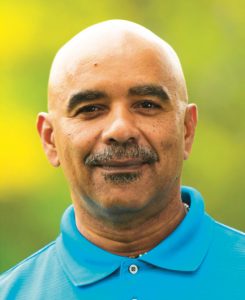
Bill Thomas will be joining us onboard High Seas Rally again in 2023. He served our country and his community for more than 30 years. He joined the Air Force Reserve in 1977 and got out in 1986 to become a Newark, NJ, police officer. Then he went back into the Air National Guard in 1998, working his job with the Newark Police and serving his country at the same time. As a result of his life as a police officer and airman, by the time he deployed to Iraq in 2007, he was already living with some of the symptoms of post-traumatic stress disorder (PTSD).
One day in Iraq, while looking for weapons in a building at Baghdad International Airport, one of Bill’s team members and his bomb sniffing dog came in contact with exposed wiring, killing the dog and sending the man flying through the air. After the electrical explosion, two higher-ranking airmen abandoned them inside the hangar, rather than coming to their aid. The situation was a breaking point for Bill and sent his PTSD into high gear.
The next two years were a mix of therapies, prescriptions, and inpatient treatment – but nothing brought him peace. Then, in 2009, Bill tried to commit suicide – but thankfully, paramedics arrived and were able to get him to a hospital. Shortly thereafter, he found a path toward the peace he was looking for with Wounded Warrior Project® (WWP).
Sam Hargrove

Sam Hargrove joins High Seas Rally again in 2023. She joined the U.S. Air Force in 1996 for the promise of a better life and a secure future. She never thought her job as an admin, working on computers, would put her in harm’s way – but in Iraq, everything was in harm’s way.
One morning in 2003, while calling home from a tent on her base in Tallil, a bomb exploded. The shock wave from the blast blew through the tent, knocking out the base’s communication system and leaving Sam with a traumatic brain injury. Miraculously, she was able to walk away from the explosion – helping a junior Airman to safety along the way.
When she returned home, she couldn’t escape the memory of the blast and the hypervigilance she’d become accustomed to while deployed to a warzone. In 2010, Sam finally realized she needed help. “My godson told me he was scared of me,” says Sam. “I had a lot of anger issues.”
Sam got some counseling, but regular therapy was only helping a little bit. One night, she got drunk and intended to turn off the road and crash her car into a tree to end her pain. Thankfully, she never took that turn. The next day, she told her social worker that if she didn’t get help right away, she would try to kill herself again.
He got her into a 90-day inpatient program, which helped while she was there — but she lapsed into negative patterns when she got back home. Then she learned about Wounded Warrior Project® (WWP).
Dan Smee
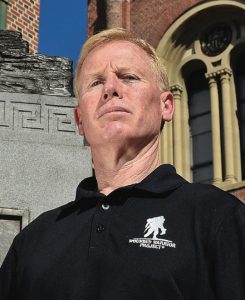
Dan Smee joined the U.S. Army as a medic in 1983, served his four years, and then went back to living a normal civilian life. But after 9/11, he felt he had to do something to help – so in 2002, he joined the National Guard. They put him in the same job he’d had 14 years earlier, but this time, his combat medic training would truly be put to the test.
On November 10, 2004, Dan was among the first on the scene when an improvised explosive device detonated under the lead vehicle of his convoy. His platoon sergeant, Mike Ottolini, made the ultimate sacrifice for his country that day. Knowing there was nothing he could do for Mike, Dan went to treat Sergeant Nevins, who had also been badly wounded. But after he came home, Dan couldn’t get the memories of that incident out of his mind.
“For years, I carried the images of Sgt. Nevins in my head, half in and half out of his vehicle,” admits Dan. “It was eating me up, and I always wondered if he blamed me for not being able to save his leg.”
Post-traumatic stress disorder (PTSD) took over, and Dan felt empty for years. He tried drinking away his problems, but at the bottom of a bottle he only found more problems. Then he found Wounded Warrior Project® (WWP). One of the first WWP events Dan attended was the 2010 Courage Awards – where Sgt. Nevins was one of the featured speakers.
Bill Hansen
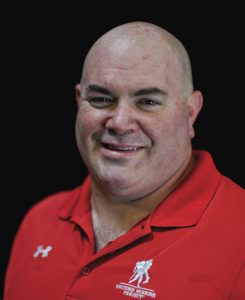
Bill Hansen served 10 years in the U.S. Marine Corps and 12 years in the Army National Guard. He deployed to Iraq twice – during both Operation Desert Storm and Operation Iraqi Freedom. And his second trip to the Middle East, from 2008-10, kept him away from his girls for the better part of two years.
“It was horrible,” says Bill. “I had to work hard for years to try and restore my relationship with my daughters. But it was worth it.”
But his quest to get back to the proud, positive Dad he’d been before he left didn’t begin as soon as he got home. At first, he was depressed. He withdrew from everything, and everyone. All he wanted to do was sit on the couch. Eventually, he’d become so out of shape he could barely recognize himself anymore.
“I sat there wondering, ‘Is this really me?’, says Bill. ‘My daughters are my life. What do I have to do to be Dad again?”’ Then in 2013, Wounded Warrior Project® (WWP) invited Bill to Soldier Ride®. At the event, he met some WWP staff members who encouraged him to compete in an upcoming obstacle course event. Not one to back down from a challenge, Bill agreed.
Chris Hoff
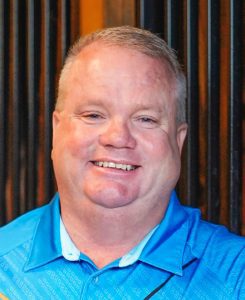
After enlisting in the military straight out of high school in 1986 and serving for eight years, Chris Hoff was honorably discharged. He transitioned to civilian life, took a job, and got engaged. But seven years later, the events of September 11 made him so angry he re-enlisted in the Army Reserve the very next day. “We lost our innocence, so to speak,” says Chris. “I remember telling my brother, ‘I’m leaving tomorrow if I can.'”
In 2004, on only his third day in Afghanistan, Chris suffered a traumatic brain injury (TBI) during Humvee rollover training. But like many TBIs at the time, it went undiagnosed, and he was sent back to work. A few days later, Chris’ unit lost six soldiers and he was asked to attend the fallen comrade ceremony that followed. “I touched every single casket,” remembers Chris. “I’d come off each casket crying like a baby. I wound up doing 123 of those ceremonies.”
Always wanting to help his team complete its mission, Chris volunteered for a variety of extra tasks during his deployments – including the difficult job of delivering the bodies of locals who had been killed to their families. “One of my last ones is where I think my brain snapped,” says Chris. One of the body bags he was delivering was callously thrown on a table with no respect for the deceased person inside. “That thump sound wakes me up probably five or six times a week.”
After returning home, Chris’ post-traumatic stress disorder sent him into a downward spiral. He couldn’t go back to his former job, and his wife divorced him. He felt useless and had no clear vision of what to do next. “I thought I had nothing to live for,” says Chris. “I contemplated taking my own life.”
Chris Wolff
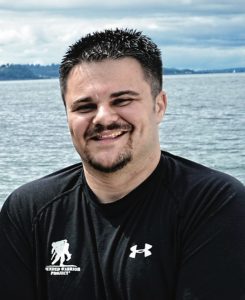
For Chris Wolff’s high school graduation present, his grandfather took him to visit New York City. Growing up in Southern California, Chris was excited to see Manhattan – and he still remembers the moment he saw the skyline for the first time. It was the evening of September 10, 2001.
The next morning, he and his family watched from Staten Island as the towers were struck by planes and collapsed. Within the month he enlisted in the U.S. Air Force.
Chris was an aircraft mechanic and deployed to Iraq and Afghanistan on many occasions. On one deployment, Chris’ C-17 aircraft brought back 172 allied forces caskets from Iraq in just four months. As a result of his exposure to the aftermath of war, Chris lives with post-traumatic stress disorder (PTSD).
Yet after all that happened on his many deployments – including being in an airplane that was hit with a rocket-propelled grenade and almost crashed – it was a normal procedural inevitability that ended Chris’ military career. His annual flu shot infected his spinal cord and left him paralyzed.
For months he lay in a hospital bed unable to move on his own. Then, one day, he lifted his left hand a quarter of an inch. “I was proving to everyone and myself that I wasn’t dead,” Chris says. “From then on, it was progress – inch by inch.”
